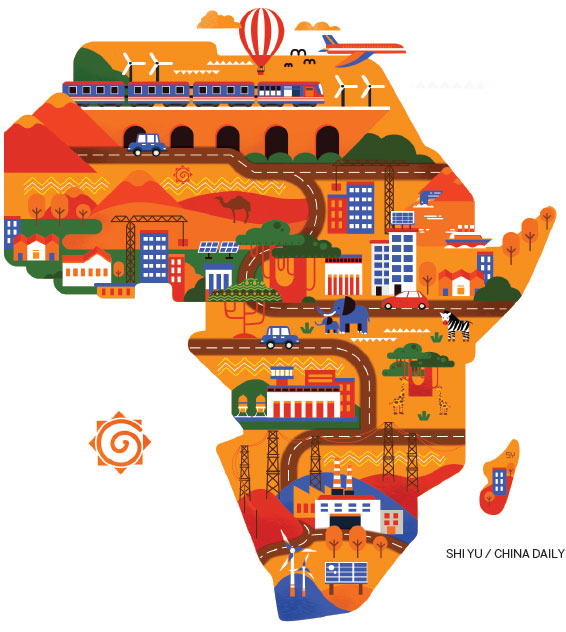In many parts of Africa, access to reliable electricity remains a daunting challenge. The persistent energy crisis in the region has left millions living in darkness, impeding progress in education, healthcare, and economic development. However, a promising initiative known as the “African Light Belt” is set to change the narrative for 50,000 off-grid households across the continent.
The “African Light Belt” initiative, spearheaded by China’s Ministry of Ecology and Environment, is designed to extend solar power to underserved communities in Africa. Xia Yingxian, director of the Ministry’s Department of Climate Change, explained that the program aims to invest approximately $14 million in solar power projects. This financial boost will target areas that lack access to main power grids, bringing essential lighting and electricity to regions that have long been neglected.
“This initiative is not just about providing power,” said Yingxian. “It’s about empowering communities, fostering resilience, and supporting sustainable development.”
Bringing Solar Power to the Unreached
The program’s scope is ambitious. According to recent reports, agreements have already been implemented in five African countries to connect nearly 30,000 households to solar electricity. This marks significant progress toward the overall goal of reaching 50,000 households. By the end of 2024, the plan is expected to deliver 4,300 solar systems in Chad and another 3,100 in São Tomé and Príncipe.
For many of these households, solar energy represents a lifeline. It promises to transform daily life by enabling children to study after sunset, health clinics to operate more effectively, and small businesses to extend their working hours. The initiative also aligns with broader global goals of reducing carbon emissions and supporting clean energy transitions in developing countries.
China’s approach to the “African Light Belt” reflects a commitment to balancing climate action with economic realities. The country’s climate stance emphasizes the importance of considering the varying development stages and capacities of different nations. In a recent statement, China reiterated the need for pragmatic solutions that respect the economic limitations of developing regions.
“We understand that progress must be inclusive,” Yingxian noted. “Developed nations must take the lead in reducing emissions while supporting developing countries through climate finance.”
The call for equitable climate action is particularly relevant in Africa, where the impacts of climate change are already being felt acutely. Droughts, floods, and changing weather patterns have disrupted agriculture and placed immense pressure on local economies. Solutions like the “African Light Belt” aim to alleviate these pressures by introducing sustainable, low-carbon energy solutions that also contribute to community resilience.
For the “African Light Belt” to achieve its full potential, financial backing is crucial. The report accompanying the initiative highlights the role of international financial institutions in supporting such green projects. Organizations like the Green Climate Fund (GCF) and the Asian Infrastructure Investment Bank (AIIB) are urged to increase their contributions to renewable energy projects in Africa.
In recent years, China has worked to encourage greater African participation in global climate discussions. The China-Indian Ocean Development Cooperation Forum is one such platform that facilitates collaboration on disaster resilience, low-carbon infrastructure, and knowledge exchange. By fostering these connections, China hopes to build a coalition that can advocate for stronger climate financing and action that benefits Africa and other vulnerable regions.
The Road Ahead: Challenges and Opportunities
While the “African Light Belt” holds promise, challenges remain. Implementing solar power projects in off-grid areas requires careful logistical planning, skilled labor, and ongoing maintenance. Securing community buy-in and ensuring that projects are tailored to local needs will be essential for long-term success.
However, the potential benefits far outweigh these challenges. Solar power not only provides a reliable source of energy but also reduces dependency on expensive and polluting diesel generators. In many parts of Africa, households spend a significant portion of their income on kerosene for lighting—a cost that solar power can eliminate, freeing up resources for education, healthcare, and business development.
Voices from the Ground
For the families set to benefit from this initiative, the impact is profound. A mother of four in rural Chad, where one of the projects is underway, shared her optimism: “With electricity, my children can study at night, and I can start a small business from home. This will change everything for us.”
Local officials and community leaders have also expressed support for the “African Light Belt,” noting that it complements their development plans. “This project fits well with our efforts to build a sustainable future,” said a representative from São Tomé and Príncipe’s Ministry of Energy.
A Global Call to Action
The success of the “African Light Belt” will serve as a blueprint for similar initiatives across the continent and beyond. It underscores the importance of international cooperation and targeted investment in bridging energy gaps. Developed nations are encouraged to fulfil their pledges, reduce emissions, and step up support for global climate finance.
The vision of a connected, sustainably powered Africa is within reach. Through the “African Light Belt” and other initiatives, progress is being made, one solar panel at a time. The path forward demands commitment, collaboration, and a shared belief in a brighter future—both literally and figuratively—for the people of Africa.




